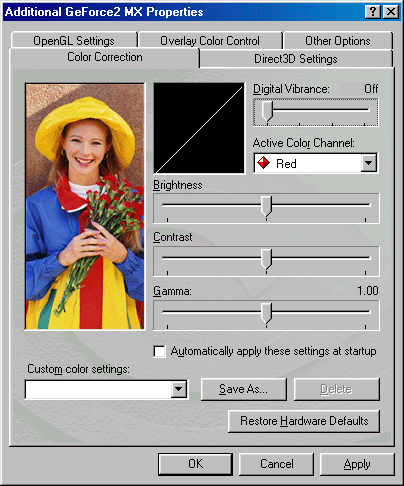NVIDIA's Detonator3 Drivers - Teaching an "old" dog new tricks
by Anand Lal Shimpi on August 14, 2000 9:00 AM EST- Posted in
- GPUs
Digital Vibrance Control
If you recall from our GeForce2 MX (NV11) Review,one of the features unique to the GeForce2 MX (and the Quadro2 MX) is its support for something NVIDIA likes to call "Digital Vibrance Control" (DVC). We referred to DVC as nothing more than "glorified gamma control" in our MX review, and now with the new Detonator3 drivers we actually got a chance to play around with DVC (the older drivers could not enable it).
Below is the sample picture NVIDIA provided us with that illustrates DVC's capabilities. The left side of the picture does not have DVC enabled but the right side of it does:

Our experience with DVC wasn't nearly as dramatic as NVIDIA's picture above illustrates, what we did notice was that adjusting the DVC settings (there are three levels of DVC that can be enabled, or it can be shut off completely) seemed to make the screen brighter as if we tweaked the individual gamma levels perfectly.

Finally, Digital Vibrance Control support
NVIDIA will argue that DVC doesn't work the same way a gamma slider does because DVC supposedly adjusts the image data after it leaves the frame buffer but before the RAMDAC, thus adjusting the actual data not the image being outputted. While this may be true, the fact of the matter remains that DVC still yields the same end results as tweaking your gamma settings, it's simply easier.










0 Comments
View All Comments